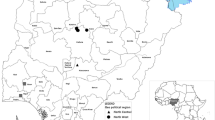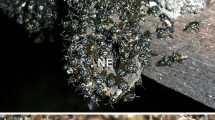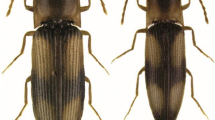Summary
In this paper it is shown that the mandibular glands of young bumblebee queens produce a species-specific sex pheromone. From our results it becomes obvious that the pheromone is a releaser for the mating attempts made by the conspecific males.
Similar content being viewed by others
Literatur
A. Frank, Z. vergl. Physiol.28, 467 (1941).
A. Haas, Z. Tierpsychol.17, 402 (1967).
E. Krüger, Z. Tierpsychol.8, 61 (1951).
G. Stein, Biol. Zbl.82, 343 (1963).
B. Kullenberg, G. Bergström and S. Ställberg-Stenhagen, Acta chem. scand.24, 1481 (1970).
J.B. Free, Behaviour40, 55 (1971).
Author information
Authors and Affiliations
Additional information
Supported by The Netherlands Organisation for the advancement of Pure Research ZWO.
Rights and permissions
About this article
Cite this article
van Honk, C.G.J., Velthuis, H.H.W. & Röseler, P.F. A sex pheromone from the mandibular glands in bumblebee queens. Experientia 34, 838–839 (1978). https://doi.org/10.1007/BF01939651
Issue Date:
DOI: https://doi.org/10.1007/BF01939651




